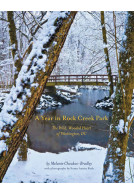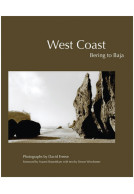The Valley of 10,000 Smokes (Hardback)
You'll be £15.00 closer to your next £10.00 credit when you purchase The Valley of 10,000 Smokes. What's this?
+£4.99 UK Delivery or free UK delivery if order is over £40
(click here for international delivery rates)
Need a currency converter? Check XE.com for live rates
(click here for international delivery rates)
Need a currency converter? Check XE.com for live rates
On June 6, 1912, among the Katmai volcanoes and its resident native people, an unforgettable natural event occurred: the largest volcanic eruption on Earth during the twentieth century. In size comparable to Indonesia's Krakatau in 1883 and Tambora in 1815, one must go back 2,000 years to the north island of New Zealand to find as large a release of rhyolite magma.
The actual eruption took place about 100 miles west of Kodiak in the Aleutian Range on the Alaskan Peninsula. In three days, a new volcano—Novarupta—was born. More than five cubic miles of ash and debris flew into the atmosphere, with heavier deposits filling an adjacent forty-four-square-mile valley in depths up to 1,000 feet. The dense, superheated waves of magmatic spray incinerated all living organisms, leaving a hot bed of igneous material that, when mixed with water from the surrounding glaciers and snowfields, produced tens of thousands of steam vents known as fumaroles. Thus was born the Valley of 10,000 Smokes. Native villages, some thousands of years old, were abandoned and never reestablished.
The eruption was of such consequence that the National Geographic Society sent Robert F. Griggs to direct a four-year expedition to the site. Griggs and his party recorded their scientific expedition in stunning black-and-white photographs and moving text, which led to the publication of a 50-page article in National Geographic Magazine in 1918 and a subsequent book issued by the Society in 1922 that remains available today. Gary Freeburg has traveled to the Valley of 10,000 Smokes five times, from 2000 to 2011, in pursuit of rephotography of the contemporary landscape and the larger experience of wilderness. Although the fumaroles that Griggs so vividly portrays in words and pictures are largely gone, and that element of visual and volcanic activity has largely ceased, in Freeburg's photographs one can still feel the steam-filled air, sense the deafening noise of the eruption, and grasp the incredible physical forces that created this alluring landscape.
Now preserved as part of the 4.7-million-acre Katmai National Park and Preserve, the Valley of 10,000 Smokes continues to inspire—not just esteemed volcanologists such as John Eichelberger and expert cultural anthropologists such as Jeanne Schaaf, but great artists such as Gary Freeburg who seek out the Alaskan sublime, as it is revealed in one of Earth's most remote, raw, and wild places. (See the publisher's website for further information on exhibits, book signings, and to view a slide show: http://gftbooks.com/books_Freeburg.html ).
Other titles in George F. Thompson...















